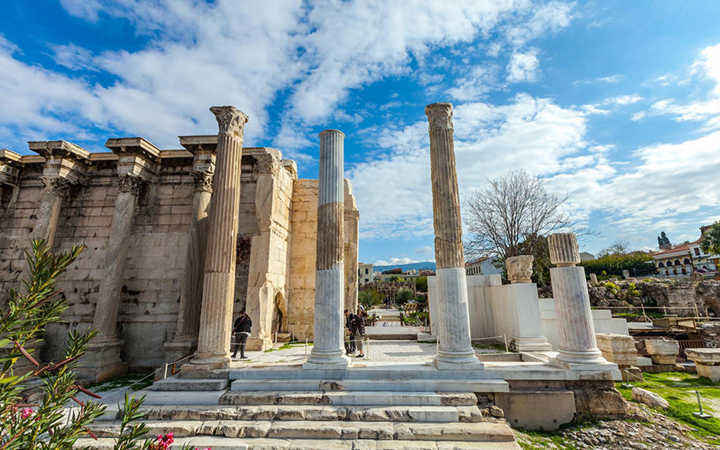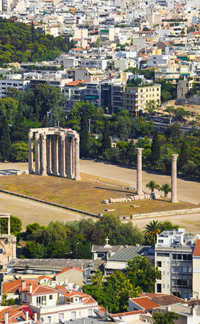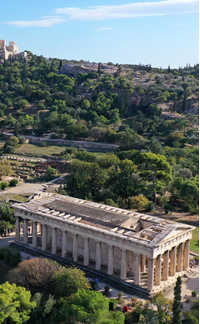Nestled just behind Monastiraki Square, Hadrian’s Library is one of Athens' most striking Roman-era landmarks. Built in 132 AD by the Roman Emperor Hadrian, a great admirer of Greek culture, the library was not just a place for books — it was a grand cultural center meant to rival the intellectual glory of ancient Athens.
Constructed with impressive Corinthian columns and fine marble, the complex originally housed reading rooms, lecture halls, and even a central courtyard with a reflecting pool. It served as a hub for scholars and philosophers to read, debate, and engage in public life.
What made Hadrian’s Library unique in its time was its fusion of Roman architectural ambition with Greek intellectual tradition. Scrolls and codices were stored along walls, while tranquil gardens and fountains provided a reflective space for learning and discussion.
Over the centuries, the site transformed: it became a church, then a Byzantine church complex, and even a residence during Ottoman rule. Despite the changes, remnants of the library’s tall façade, columns, and foundation walls still stand proudly today.
Located within easy walking distance of the Acropolis and the Ancient Agora, Hadrian’s Library is a must-see for anyone interested in the layered history of Athens — where Roman grandeur meets Athenian wisdom.


















